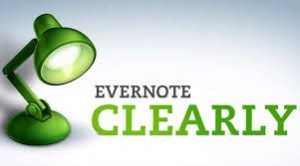 Using Evernote is like having an incredibly organized file cabinet with folders for every assignment, project, idea, interaction, or anything that you want to keep together in a safe place. Evernote is different than Dropbox in that Dropbox is like an external hard drive in the cloud. Dropbox holds files.
Using Evernote is like having an incredibly organized file cabinet with folders for every assignment, project, idea, interaction, or anything that you want to keep together in a safe place. Evernote is different than Dropbox in that Dropbox is like an external hard drive in the cloud. Dropbox holds files.
Dropbox does not organize information or duplicate a file cabinet, unless the user somehow pulled that organization together. Google Drive is similar to Dropbox in that it holds files, however, its main advantage is that it allows multiple people to collaborate on projects, in real-time, from anywhere in the world.
When we look at Evernote from a “technology in education” standpoint, there are many ways this tool can be useful. One can browse the web and find an interesting website that relates to research being done for an article or paper then click on the plug-in icon in the browser that will send that webpage directly to the file folder of choice in Evernote.
Because Evernote is cross-platform, anything stored in Evernote is visible from all your devices. It’s like Microsoft Onenote on steroids. The only negative that I find in using Evernote as opposed to Microsoft Onenote is that if I want to add drawings or colors or visuals, I must do those in Skitch, which is a separate app unavailable on the PC. Skitch then syncs the newly created files with Evernote.
Ideas for Using Evernote Technology in the Education Classroom
1. Use Evernote to complete research for a project and share that research with the teacher.
2. Add articles by adding the “clipper” tool to your web browser.
3. As students read articles, they can add their own thoughts and ideas in Evernote, either in writing or via audio files.
4. When students take notes in class, they can use Evernote and share those notes with other students.
5. Students can add photographs taken with their devices to represent vocabulary, a setting in a play or novel, people they think might “look like” a character in a novel, etc.
6. Students use Evernote to create portfolios in the classroom. Handwritten notes can be scanned or captured with Evernote’s camera function and added to their portfolio.
7. Teachers can use Evernote for researching and organizing their notes with the bonus of being able to search all notes in one place.
8. Teachers can create a notebook for each student and invite students to the notebook. Then teachers can comment on student notes.
9. Teachers can create one shared notebook for student assignments. Invite each student to that one notebook and list the days’ work as well as the homework.
10. Teachers add digital versions of literature covered in class. Save the links in the notes and share them with students.
11. Post a public link to the notebook on the school website so that parents can join the notebook from the public link and support students with assignments.
12. Evernote’s reminder function can support students to complete assignments on schedule.
For example: You surf the web and find a current event or editorial article related to the current lesson objective. You clip the article, include a video you found online related to the topic, include a picture gallery related to the report and add a corresponding worksheet that you will use in class. Add references to vocabulary in the article to the same folder. You then share an alert about this folder and assignment via Twitter or e-mail.
You can also install the “Clearly” extension for Evernote which eliminates ads, distracters, and web items to which you do not want students exposed.
Excerpted from 100+ Tech Ideas for Teaching English and Language Arts: Maximize iPad, Mobile, and Online Apps in Every Classroom – Currently ON SALE at Amazon.com

